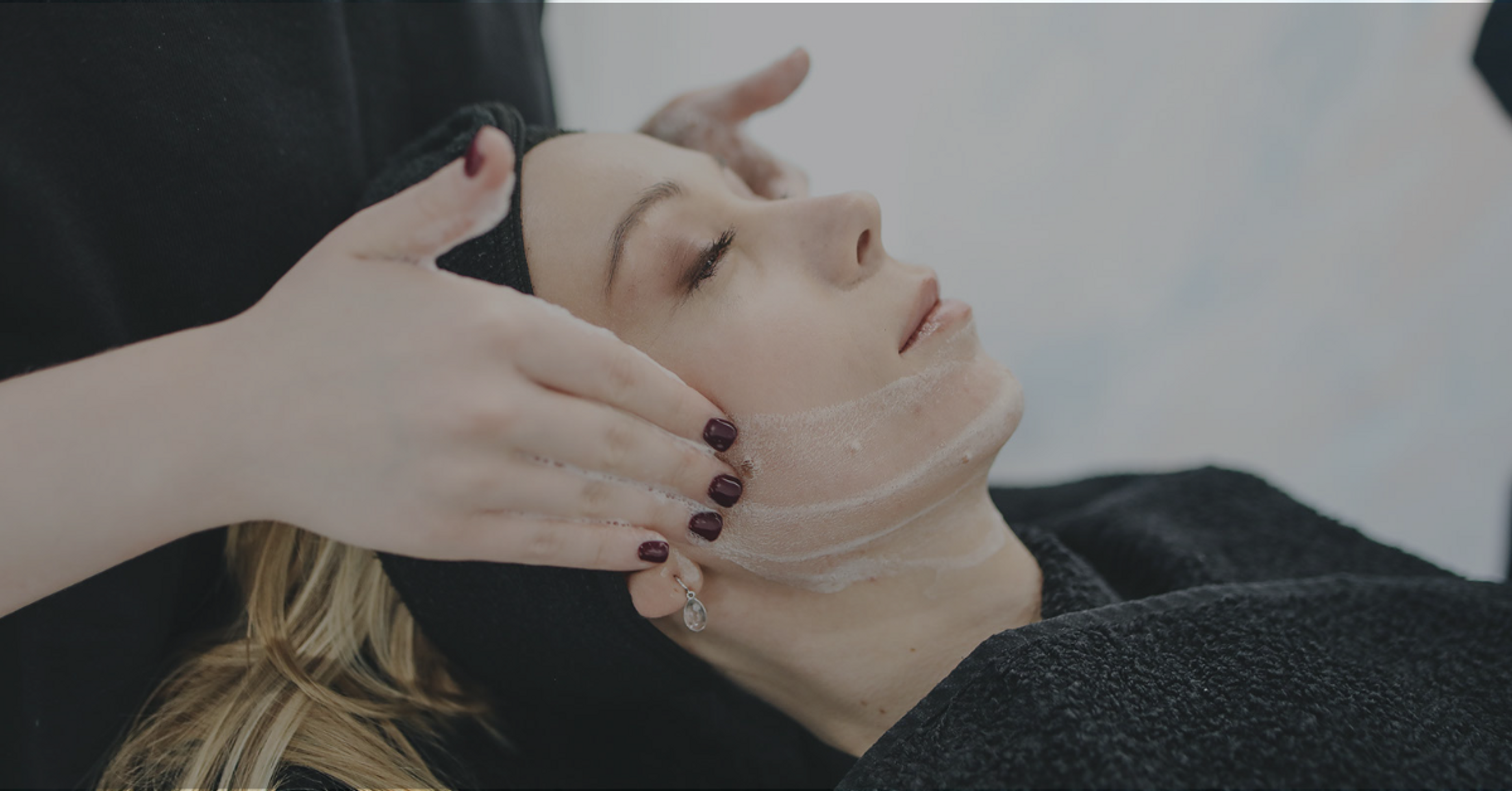Chemical peel. Sounds horrendous, right? I mean, who came up with that name? But, while the name doesn't exactly make you want to run out and book one, skin peel results are actually pretty impressive. So, what is a chemical peel, who are they suitable for, and what’s the recovery time of a face peel like? Let’s (ahem) peel away the mystery.
What is a chemical peel?
Ok, so let’s get right down to it. A chemical peel - AKA a skin peel - is a type of treatment used to improve the overall appearance of skin by chemically exfoliating it and boosting new skin cell growth and collagen.
Practitioners apply a solution made up of acid that removes dead skin cells to create smooth skin, lessen blemishes, pigmentation, fine lines and acne scarring, as well as minimising the appearance of age spots.
Acid? Yep, that’s right - but it’s not as scary as it sounds, as, if used properly, the acids used in a skin peel are safe on skin and can have fantastic results. In fact, you'll find some of these acids in your every day skincare products (albeit at a lower percentage). Because of the complexity of chemical peels, we recommend only going to a medically qualified practitioner, regardless of the type of chemical peel you choose. Trust me, you do not want to mess with these acids!!
But wait - there are different types of chemical peel?
Yup. Depending on the effect you're looking for and the healing period you can manage, there are three types of chemical peels: a superficial skin peel, a medium strength skin peel and a deep skin peel. Let’s take a look at the different types and get a closer glimpse at what chemical peels do.
So, what’s a superficial chemical peel?
A superficial peel is the mildest type of chemical peel - otherwise known as a light chemical peel. Your practitioner will likely use a solution made up of either lactic acid, glycolic acid, tartaric acid or salicylic acid that will break down the chemical bonds in the skin in order to get rid of the dead skin cells, replacing them with new, improved skin cells. As the name suggests, acids used in superficial peels don’t penetrate very far - just to the epidermis (the top layer of skin that we see).
Superficial peels are perfect if you want quick results and a speedy recovery period, as you’re looking at just one day before you can get back to normal. They start from just £60 too, so are great from a cost perspective, but they will need to be repeated regularly in order to maintain the fantastic results. I had one of these myself recently - and you can find out how I got on here.
Ok, and a medium depth skin peel?
For a medium depth chemical peel, the practitioner will generally use trichloroacetic acid (TCA) which isn’t neutralised. This works by going a little deeper than the superficial peel, penetrating the upper dermal layers (just below the surface, where collagen fibres are found).
Due to the stronger acid mix and the depth that the treatment reaches, the medium peel provides a more impressive result - helping reduce dark circles, sun damage and mild acne scarring. But it’s worth noting that the recovery period is longer, and can take up to a week. In the meantime, skin is red and very raw, so you’ll likely want to stay home during this period. Though skin isn’t generally sore, you will need to keep it covered in antibiotic ointment.
So, while a medium peel can have more noticeable results than a superficial peel, it is not necessarily ideal for people looking for an immediate result. If you have an event coming up that you want to have fresher looking skin for, and have decided that a medium peel is for you, be sure to book an appointment in advance. Don't do a Samantha and go straight out to your best friend's book launch looking like a slice of ham (if you know, you know!).
Go on then, what’s a deep peel?
A deep chemical peel removes the epidermis and deep dermal layers for more impactful results that last much longer than a superficial or medium peel. For a deep peel, TCA is used (as above). But this time, the concentration is higher and it is left on the skin for longer. Phenol is also a common ingredient in deep chemical peels.
Although the results are incredible, due to its intensity, the deep peel requires a much longer recovery period. Initially, it will look like you have experienced severe sunburn, and it could be several months before the redness has fully disappeared. It’s also important to note that aftercare is a must here. If you have a deep peel, keeping your treated skin covered in antibiotic ointment, moisturiser and sunscreen is essential in order to prevent your skin from changing colour or becoming at risk of damage. Aftercare information from your practitioner will be extremely important.
To find out more about superficial and medium depth peels, checkout our handy treatment guides, covering recovery time, expected results, costs and potential side effects.
Ready to get your glow on and tired of searching "chemical peel near me" and still not sure where to go? You can now book chemical peels in your area on Glowday. All of the practitioners listed on Glowday are medically qualified - so you'll know you're in safe hands.

